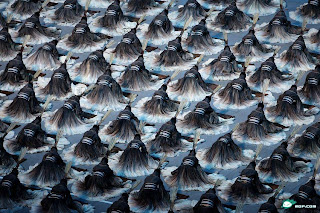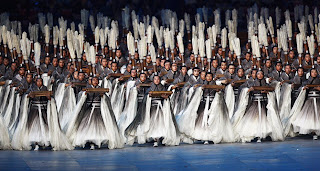The longest 13 days in Yao Ming's 27 years of life ended on Wednesday after China lost to Lithuania. That the Chinese men's basketball team could not create an impact in Beijing re-ignited rumors over his retirement from the Olympics.
But the NBA star was not ready to answer that question with a straight yes or no.
China's Yao Ming (L) attempts to score against Lithuania during their basketball game at the Beijing 2008 Olympic Games, August 20, 2008. [Agencies]
"Playing for the country and competing in the Olympics is a big, big honor," he said in his trademark ambiguous tone. "I knew about the Olympics before I learned about the NBA ... playing in the Olympics was my childhood dream."
Yao was straightforward with his best wishes for Liu Xiang, though. The ace Chinese hurdler pulled out off the heats with an injured Achilles tendon. "Liu still has a long career before him," Yao said.
"He will strive to bring more honor to us. Please understand him Injury is part of our career it just happens sometimes."
The Chinese men's basketball team finished eighth, equaling its best Games record of two wins and four defeats, including a heartbreaking loss to Spain.
Everyone agrees the team has given an improved performance. For his part, Yao said he was "really, really proud" of his teammates, who "played with courage and (gave) all they could give".
"We're still not (among) the best few teams in the world our players (need) to become stronger, quicker and more experienced (but) it's always easy to say, of course," the 7-foot-6 giant said at a media briefing, organized in Beijing by Coca-Cola.
He is proud of the Beijing Games, he said, and thankful to those who devoted their seven years for its preparation. "All (this) shows how we love sport and how we love communicating with the entire world I hope we'll get more opportunities like this."
NBA superstar LeBron James, too, was present at the briefing, and presented an autographed, 2-m version of a "Unity Bottle" of Coke.
James applauded China's Games performance on home soil, saying the country had done "an excellent job".
Yao responded, in a lighter vein, though: "(More than) 40 golds may be surprising, but compare it with 1.3 billion people (in China) - I think it's pretty normal."






























